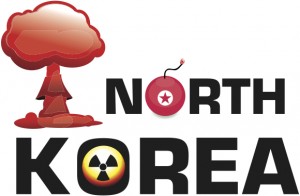10/20/2011 By Richard Weitz
China and Russia have the world’s two most powerful militaries after that of the United States. China is undertaking perhaps the most comprehensive military modernization program in the world today, while Russia still has approximately as much nuclear, biological, and chemical weapons potential as the United States.

Both countries can veto actions of the UN Security Council, including WMD-related sanctions resolutions. Their industries are leading global suppliers of WMD-related dual-use items as well as their means of delivery.
In confrontation with Washington, Beijing and Moscow could go far towards impeding realization of U.S. nonproliferation goals. In partnership with the United States, the three governments could help reinforce global nonproliferation regimes under strain.
The importance of these two countries to U.S. and global security explains why the U.S. Congress recently held a hearing focused on the implications of their nuclear modernization programs. The session also considered other WMD and proliferation issues.
The relationship between the Chinese and Russian governments is perhaps the best it has ever been. They have resolved their longstanding border disputes as well as contained their rivalries in Central Asia, the Korean Peninsula, and other regions. Their leaders engage in numerous high-level exchanges, make many mutually supportive statements, and cooperate in other ways in support of what both governments refer to as their developing strategic partnership.
Their growing bilateral commerce and investment is now encompassing nuclear power as well as other energy sources. Beijing and Moscow share interests and objectives in many of the world’s WMD-important regions such as the Middle East and East Asia.
Neither Chinese nor Russian military experts perceive a near-term military threat from the other’s country. The Russian government has even provided sophisticated navy, air, and air defense platforms to the Chinese military, confident that the People’s Liberation Army would only employ these systems, if at all, against other countries. Since the two governments signed an agreement on military-technical cooperation in 1992, China has purchased more defense products from Russia than from all other countries combined.
The 2001 China-Russia friendship and cooperation treaty establishes a basis for extensive bilateral security and defense collaboration. Frequent encounters take place between senior Chinese and Russian military officials, including annual meetings of defense ministers and the chiefs of staff of the armed forces of both countries. They also confer regularly at sessions of multinational gatherings, such as at meetings of the Shanghai Cooperation Organization, which host regular sessions for defense ministers. Contacts are even more common among mid-level military officers, especially those in charge of border security units and military units in neighboring Chinese and Russian territories. Russian and Chinese experts also engage in regular direct discussions related to WMD issues. During the past decade, the Chinese and Russian militaries have engaged in many joint and multinational exercises.
China and Russia have both opposed North Korea’s acquisition of nuclear weapons while simultaneously resisting international initiatives that they believe could create chaos on the Korean peninsula. Both Beijing and Moscow desire a change in Pyongyang’s behavior, but not a change in its regime. They remain more concerned about the potential immediate collapse of the North Korean state than about its government’s intransigence on the nuclear question.
Despite their differences with Kim Jong-il, Chinese and Russian leaders fear that the North Korea’s disintegration could induce widespread economic disruptions in East Asia, generate large refugee flows across their borders, weaken Chinese and Russian influence in the Koreas by ending their unique status as interlocutors with Pyongyang, and potentially remove a buffer separating their borders from American ground forces (i.e., should the U.S. Army redeploy into northern Korea).
At worst, the North Korea’s collapse could precipitate a military conflict on the peninsula—which could spill across into Chinese territory. Policy makers in both countries appear to have resigned themselves to dealing with the current North Korean regime for now, while hoping a more accommodating leadership will eventually emerge in Pyongyang.
The governments of China and Russia have pursued similar WMD-related policies in the Middle East. They both want to sell Iran conventional; weapons, nuclear energy technologies, and other products. Although Beijing and Moscow have warned Tehran against pursuing nuclear weapons, they have stressed the need for engagement rather than punishment and have always defended Iran’s right to pursue nuclear activities for peaceful purposes such as civilian energy production. Chinese and Russian diplomats have often worked to weaken proposed sanctions on Tehran, while many Chinese and Russian companies have helped undermine the WMD-related sanctions imposed by the UN and Western governments by backfilling for other departing foreign firms.
Yet, in recent years, Chinese and Russian officials have led international opposition against imposing rigorous sanctions on Iran, North Korea, and other countries that have violated their nonproliferation commitments. The fact that both China and Russia—in particular, their government agencies and nominally independent private defense trading companies—have been sanctioned on numerous occasions by the United States and its allies has likely contributed to their distaste of such measures.

Many of the joint declarations issued by Chinese and Russian officials address WMD issues. For example, their June 2009 joint statement devoted several paragraphs to their “grave concern over the situation on the Korean Peninsula.” The two governments called for a peaceful resolution of the dispute over North Korea’s nuclear weapons within the framework of the Six-Party Talks. Their declaration further affirmed their joint opposition to the “weaponization” of outer space.
China and Russia have cooperated on civilian space research missions for many years. Indeed, many of China’s space exploration capabilities are based on former Soviet technologies. More recently, the two governments have proposed various arms control initiatives purportedly aimed at preventing the militarization of space. For example, China and Russia have submitted a joint space treaty to the Conference on Disarmament that would impose legal constraints on how the United States could use outer space.
After China broke an international moratorium and tested an anti-satellite weapon in January 2007, Russian officials refrained from criticizing Bejing and instead attacked the United States for blocking progress on outer space arms control negotiations. On October 13, 2009, Russia and China signed an agreement to notify each other of some of their ballistic missile and space launches. The agreement will cover launches of ballistic missiles that the countries launch in the direction of each other. This accord is one of the very few notification arrangements China has thus far adopted.
Furthermore, both the Chinese and Russian governments have increasingly expressed their shared concern about the efforts by the United States and its allies to strengthen their ballistic missile defense (BMD) capabilities. Their professed fear is that these strategic defense systems, in combination with the strong American offensive nuclear capabilities, might enable the United States to obtain nuclear superiority over China and Russia. Russian government representatives have been most vocal in expressing their concerns about U.S. BMD plans, but the Chinese have also criticized U.S. BMD plans, if somewhat less vocally than their Russian counterparts.
Policy Implications
Despite their mutual concern about American strategic ambitions, the governments of China and Russia have not undertaken any widespread concrete collaboration in this area. To take an illustrative example, Chinese and Russian representatives have thus far limited their BMD collaboration to issuing joint declarations.
More extensive collaboration could presumably range from simply exchanging intelligence assessments to undertaking joint research and development programs for shared anti-BMD technologies. For example, they could pool their resources or expertise to overcome U.S. BMD systems. They could also coordinate pressure against other countries in Europe or Asia to abstain from deploying U.S. BMD assets. Such collaboration could also extend to include their joint opposition to other U.S. strategic policies, such as proposals to place conventional warheads on strategic delivery vehicles.
Increased China-Russian cooperation against U.S.-led BMD efforts in Asia and Russia would complicate U.S. efforts to develop cooperative BMD partnerships. The United States has already found it hard to work with Russia on the BMD partnership that was agreed to at last November’s NATO summit.
The United States has been offering four concrete areas of BMD collaboration with Moscow:
(1) bi-national and multi-national joint centers to make the non-threatening nature of NATO BMD more transparent;
(2) joint studies of Russian and U.S. experts on how U.S./NATO BMD might affect Russia’s nuclear deterrent;
(3) resumed and expanded TBMD exercises; and
(4) a framework legal agreement to support these and other cooperative projects.
Although the Russians have expressed interest in these technical projects (some of them were originally Moscow’ s proposals), they have insisted on first securing agreement with Washington on underlying strategic principles. Above all, they want the United States to sign a legally binding agreement that U.S. BMD will never threaten Russia’s strategic deterrent—something that no U.S administration will soon do.
Even without extensive Sino-Russian collaboration, it will prove more difficult to reach a consensus on strategic defense with China working in harmony with Russia. Having negotiated and discussed these issues for decades, American and Russian experts have a good sense of one another’s strategic perspectives even when they disagree. But the recent P-5 meetings and other engagements make evident that the Chinese often conceive of nuclear weapons differently than Russians and Americans.
For example, they often cite their no-first-use doctrine when explaining their opposition to various U.S. nuclear policies. PRC policy makers also resist participating in the Russian-US strategic arms control reductions. Their engagement in the P-5 stability talks has also been minimal.
Possibilities exist to address some Russian concerns through mutually agreed transparency and confidence-building initiatives. Although constraining future U.S. BMD programs by signing legally binding agreements or committing to “objective criteria” (as in the 1997 TMD demarcation agreement) is politically excluded at present, the United States could inform the Russian government of its long-range BMD plans without much difficulty since the extended procurement annex to DoD projects often extends 8 years into the out years.
Providing Moscow with data from this authoritative document would not require congressional approve since it is already in the public domain. Support also exists for joint centers, allowing Russian experts to visit NATO BMD facilities, and even sharing early warning information regarding potential ballistic missile launches.
But extending such arrangements to include China would prove much more difficult given Beijing’s aversion to defense transparency, especially in the strategic realm. In addition, whereas American experts recognize that defending against Russia’s extensive nuclear forces is impossible for the foreseeable future, some are still reluctant to exclude using BMD in a potential damage-limitation strategy against China.
Collaborating with Beijing to strengthen biological, chemical, and especially missile export controls has also proven more difficult since PRC delegations at international nonproliferation meetings often side with developing countries favoring minimal restrictions on the transfer of WMD-related technologies.
On the other hand, Russian officials might be able to exercise any increased influence over Beijing to move China’s WMD nonproliferation and arms control policies in ways favorable to the United States. China’s continued exclusion from strategic nuclear arms control negotiations is already impeding U.S.-Russian progress in this area. Beijing has traditionally resisted participating in formal nuclear-arms-control agreements. During the Cold War, Chinese leaders saw superpower nonproliferation initiatives as an attempt to prevent China from developing its own nuclear deterrent.
Since then, Chinese officials have stayed aloof from bilateral Russian-American strategic-arms talks, arguing that their nuclear arsenals dwarf those of China. Yet, the substantial decrease in Russian and U.S. nuclear forces is narrowing this gap. Whereas U.S. officials want the next major nuclear arms reduction agreement to include only Russia and the United States, Russian negotiators want China and other nuclear weapons states to participate. In particular, Russian representatives insist they cannot reduce their major holdings of non-strategic nuclear weapons without considering China’s military potential.

